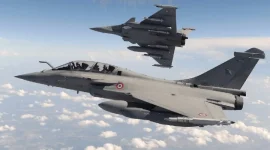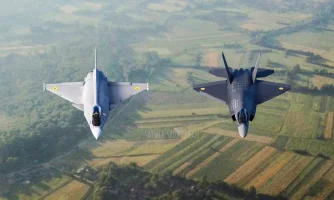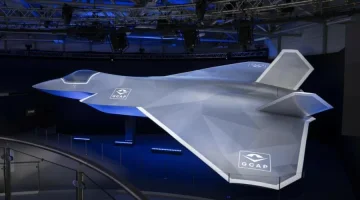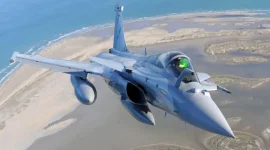- Views: 2K
- Replies: 10
A senior Indian Air Force (IAF) official has made a significant proposal for greater collaboration between services, urging the Indian Navy to consider a carrier-based version of the Advanced Medium Combat Aircraft (AMCA) for its future needs.
This suggestion challenges the Navy's ongoing plan to develop its own distinct fighter, the Twin Engine Deck Based Fighter (TEDBF).
The IAF's position is that creating a naval variant of the fifth-generation AMCA would prevent the duplication of research and development efforts, leading to substantial cost savings and streamlined logistics for the nation's defence forces.
This approach aims to build on the success of past collaborations, such as the acquisition of MiG-29K fighters, which benefited both the Navy and the Air Force.
A Unified Platform vs. a Specialised Fighter
India’s AMCA program, which received formal approval from the Cabinet Committee on Security in May 2025, is set to be the cornerstone of the country's future air power.Developed by the Aeronautical Development Agency (ADA) and Hindustan Aeronautics Limited (HAL), the AMCA is a stealth aircraft featuring internal weapons bays, supercruise capability, and advanced AI-integrated systems.
The IAF official proposed adapting this advanced platform for naval use by incorporating necessary modifications like folding wings, a strengthened undercarriage for carrier landings, and an arrestor hook for recovery.
“Why duplicate efforts when commonality breeds efficiency?” the official stated, suggesting that a joint development program could significantly shorten certification timelines and create a common inventory of spare parts.
The IAF plans to induct over 200 AMCA jets, and a common platform with the Navy could create a robust industrial and maintenance ecosystem.
Navy's Commitment to the TEDBF Program
Despite the push for synergy, the Indian Navy remains focused on its TEDBF program, sanctioned in 2021 with a budget of approximately ₹89,000 crore.The TEDBF is envisioned as a 4.5+ generation fighter, meaning it will incorporate many advanced avionics and systems found in fifth-generation aircraft, like an AESA radar, but without the full stealth characteristics of the AMCA.
The Navy’s preference for the TEDBF stems from its design being purpose-built for carrier operations from the outset.
Tailored for deployment on India’s 40,000-tonne class aircraft carriers, the 26-tonne TEDBF is designed with features like canards for superior handling at low speeds during landing.
Its design prioritises payload capacity over stealth, allowing it to carry formidable external weapons like the BrahMos-NG missile. The program aims for a first flight by 2028, with prototypes ready by 2032.
Lessons from Past Aircraft Conversions
The debate is informed by past experiences in adapting aircraft for naval roles. The IAF official pointed to the French Rafale M as an example where compromises, such as non-folding wings, were made to control costs, which India accepted for its own order of 26 naval jets.Furthermore, India’s own experience with the Naval Light Combat Aircraft (LCA) program demonstrated the profound engineering challenges in converting a land-based airframe for the harsh conditions of carrier operations.
A joint study in 2023 on creating a Naval-AMCA previously concluded that such a conversion would face "severe limitations," as the structural reinforcements needed could increase the aircraft's weight by up to 20%, compromising its stealth and performance.
The IAF's new proposal, however, advocates for a collaborative design process from an early stage to overcome these potential flaws.
Meeting Urgent Fleet Requirements
The discussion is driven by an urgent timeline. The Indian Navy’s fleet of over 40 MiG-29K fighters, which currently operate from the aircraft carrier INS Vikramaditya, is expected to reach the end of its service life by 2035.The Navy requires approximately 80 new fighters to replace the retiring MiGs and to equip its new carrier, INS Vikrant, and a planned third carrier, ensuring each can deploy a full air wing.
While the TEDBF is slated to fill this gap, any delays in its development, particularly concerning the transfer of engine technology from the United States' General Electric, could create a critical capability gap.




